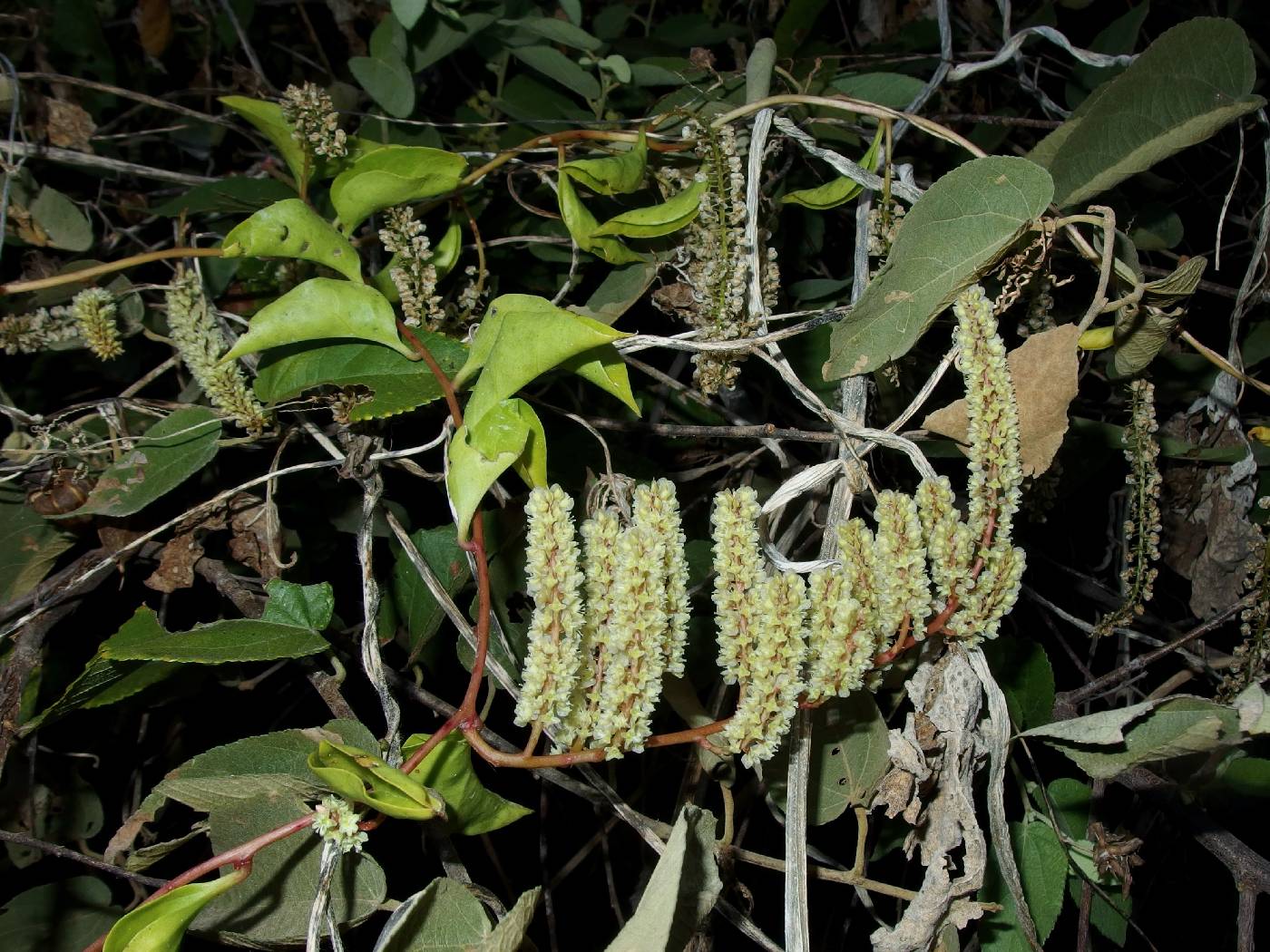Basellaceae
|
Basellaceae |
|
|
Vines [herbs], perennial, succulent, mucilaginous, glabrous. Leaves alternate, sessile or petiolate; blade margins entire [toothed]; stipules absent. Inflorescences axillary or terminal, racemose, [spicate, or paniculate], bracteate. Flowers usually bisexual, sessile or pedicellate, subtended by 1-2 bracts; perianth hypogynous, hypanthium present; sepals 2, distinct or basally connate; petals [4-]5[-13], basally connate; nectary annular; stamens [4-]5[-9], epipetalous, basally connate; filaments erect or reflexed in bud, broadened at base; anthers [basifixed]versatile, 4-locular, dehiscence longitudinal [terminal]; pollen [6-] panto-porate; pistils 3-carpellate, unilocular; placentation basal; ovule 1; styles 3, basally connate; stigmas slender, bifid to clavate or capitate [or style 1, with stigma capitate to 3-lobed]. Fruits utricles, surrounded by dry or fleshy perianth, winged or not. Seeds usually rust colored, testa membranous; endosperm copious; embryo curved. Basellaceae were formerly placed among Chenopodiaceae (G. Bentham and J. D. Hooker 1862-1883, vol. 3) or Portulacaceae (A. P. de Candolle and A. L. P. P. de Candolle 1823-1873, vol. 3; G. Nageshwar and M. Radhakrishnaiah 1993). The family was erected in 1840 and has been supported by many studies. A phenetic analysis of the Centrospermae placed Basellaceae close to Didiereaceae (J. E. Rodman et al. 1984), as did several chloroplast DNA studies (M. W. Chase et al. 1993; S. R. Downie and J. D. Palmer 1994; S. R. Downie et al. 1997; J. H. Rettig et al. 1992), which also showed a close relationship with at least a portion of Portulacaceae and Cactaceae. A study of pollen morphology (J. W. Nowicke 1996) supported close relationships among Basellaceae, Didiereaceae, and Portulacaceae. Some authors consider the pair of sepals to be bracts and the petals to be sepals, based on anatomical studies (H. P. Sharma 1961; C. R. Sperling 1987). Basella alba has been reported for North America (J. T. Kartesz 1994; P. Wilson 1932e). However, searches of herbaria failed to reveal any noncultivated specimens of the genus. Cultivated material was seen from California, Indiana, Kentucky, Louisiana, Maryland, Massachusetts, New York, South Carolina, and Wisconsin. The only monograph of the family since 1849 is that of C. R. Sperling (1987).
|
|
